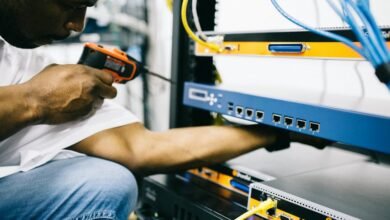
Did you know that nearly 60% of internet users express concerns about their privacy online? In a world where personal data is a commodity, understanding the intricacies of network privacy becomes essential. Oversight mechanisms can make a difference, but are they enough to safeguard your information? As we explore this topic, you’ll uncover the critical intersections between user awareness, data sharing risks, and effective security strategies.
Understanding Network Privacy: Key Concepts and Definitions
As you navigate the complexities of network privacy, it’s essential to grasp the key concepts and definitions that underpin this critical area.
Data encryption secures your information, ensuring that only authorized parties can access it.
Additionally, understanding privacy policies is vital, as they outline how your data is collected, used, and protected, empowering you to make informed decisions about your digital freedom.
Risks Associated With Data Sharing in Digital Communications
While sharing data in digital communications can enhance convenience and connectivity, it also exposes you to significant risks.
Data breaches can occur if consent management is weak or privacy policies are unclear. Your digital footprints grow each time you share information, increasing vulnerability.
Employing encryption methods can help protect your data, but user awareness remains crucial in navigating these risks effectively.
The Role of Oversight in Protecting User Information
Oversight plays a vital role in safeguarding user information amidst the growing risks of data sharing in digital communications.
Effective oversight mechanisms ensure that organizations respect user consent, limiting unauthorized access and safeguarding private data.
Strategies for Enhancing Security in an Interconnected World
In an increasingly interconnected world, implementing robust security strategies is essential to protect against the myriad of threats that arise from digital interactions.
You should leverage privacy tools to safeguard your data while adhering to stringent security protocols.
Regularly updating these tools and protocols can enhance your defenses, ensuring your personal information remains secure amidst evolving cyber threats.
Prioritize your digital freedom through vigilance.
Conclusion
In conclusion, safeguarding network privacy demands your active participation and awareness. Consider a hypothetical scenario where a popular social media platform suffers a data breach, exposing millions of users’ personal information. By understanding privacy policies and utilizing available oversight mechanisms, you can better protect yourself from such risks. Implementing robust security strategies not only enhances your personal safety but also contributes to a healthier digital environment for everyone. Stay informed, stay vigilant, and take control of your data.




